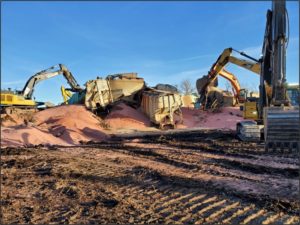Will Short Lines Continue to Swing In The Wind? RT&S Commentary
Written by David C. Lester, Editor-in-ChiefWASHINGTON – A little over a week ago, RT&S reported that Representative Byron Donalds (R-FL) reintroduced H.R. 3782 – The Short Line Railroad Relief Act with several of his colleagues. This legislation authorizes the establishment of a disaster relief program to provide much-needed immediate financial assistance to our nation’s short line railroads.
If you haven’t already read that story, please do so.
What follows is an editorial I wrote in the March issue of RT&S sharing my thoughts on the urgency of this legislation. As this legislation is being considered by Congress now, I thought it would be a good time to rerun my thoughts on critical issue for the short line industry. DCL
_________________________________________________________________________________________
The phrase “expedited legislation” may sound like an oxymoron, but this is needed to address the short line industry’s vulnerable state, particularly given the increase in natural disasters we’ve seen over the past decade. Even if we had not seen a rise in natural disasters recently, this legislation would still be urgently needed.
Some may think we’ve reported too much on this topic, but I don’t see it this way. Although our November 2022 cover story and a piece in this issue’s NewsWatch addressed the challenges faced by the Seminole Gulf Railway, the message is urgent and needs socialization to the hilt. As the November 2022 issue reported, “the damage to the Seminole Gulf was devastating. The railroad is working with federal and state agencies to obtain funding–now [then] pegged at $28 million–for rebuilding the railroad. The total amount needed will come from public and private sources.”
I spoke with Seminole Gulf’s executive vice president Robert Fay a few weeks ago, and he said the railroad was making some repairs with its funds. However, the ability to get the railroad back to full operation is dependent on federal disaster relief. As we’ve reported, I expect the short line industry has grown in size and quality to the point that Congress may not realize what a vital part of our economy these roads have become. Of course, suppose an earthquake tears up critical interstate highways or airport infrastructure reaches the end of useful life, or suffers a calamity. In these cases, the federal government is on the scene immediately with an open checkbook. While these two latter examples would undoubtedly impact the general public more than short line rail disasters, essential supply chains suffer with a short line out of service. Business disruption could impact short lines, Class Is, and customers of each.
To put a finer point on this, the president of the American Association of Short Line and Regional Railroads, Chuck Baker, said in December: “Short lines are the critical first and last mile of our nation’s freight rail system, connecting small town and rural America to the U.S. and world economies. When a natural disaster strikes, it is critical that transportation infrastructure get back up and running as soon as possible, allowing for relief efforts to flow in and materials to flow out of affected areas. Short line railroads play a critical transportation role, yet limited federal disaster relief options are available beyond small loans, whereas massive disaster relief resources are available for highways and transit. The Short Line Railroad Relief Act would allow the USDOT to provide speedy and significant grant funding to short line railroads following a disaster, so they can help rebuild the local economy instead of being forced to end operations, abandoning customers and the communities they serve.”
Until a quality program for short line disaster relief is in place, this vital sector of the U.S. economy will continue to swing in the wind, hoping the next natural disaster doesn’t blow it away.





